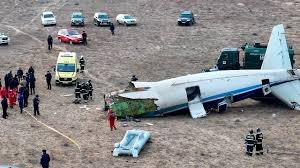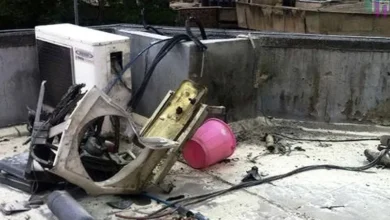Title: Plane Crash: Causes, Consequences, and What We Can Learn

Introduction: Why Plane Crashes Still Fascinate and Terrify Us
When we hear the phrase “plane crash,” our minds instantly jump to dramatic images—twisted metal, emergency responders, and tragic news headlines. It’s a phrase that triggers a deep-rooted fear, even though flying remains one of the safest modes of transportation. The sheer magnitude of destruction in a plane crash makes it unforgettable, and when they do happen, they tend to stay in the global consciousness for years.
Despite significant technological advancements, the possibility of a crash still lingers, largely because human error, unpredictable weather, and mechanical issues continue to challenge aviation safety. Every incident, no matter how rare, becomes a powerful reminder of the risks we accept when we step into an aircraft. The topic isn’t just about tragedy—it’s also about learning, improving, and evolving aviation safety.
In this article, we’ll unpack the causes of plane crashes, look at how investigations unfold, and explore what happens afterward—from both a technical and emotional standpoint. While we’re digging into the reality of these events, the goal isn’t to fuel fear—it’s to provide understanding and shed light on how far aviation has come and where it can go from here.
Common Causes of Plane Crashes: More Than Just Mechanical Failure

1. Human Error
The leading cause of plane crashes globally is human error, accounting for about 70–80% of incidents. This can range from miscommunication between pilots and air traffic controllers to poor decision-making under pressure. While pilots are highly trained professionals, they are still human. In moments of extreme stress or fatigue, mistakes can happen—especially when flying in difficult weather or unfamiliar territories.
Contrary to popular belief, plane crashes rarely happen because of just one issue. In most cases, it’s a complex chain of events. Investigators often say it takes multiple small errors or oversights to bring down a plane—what’s known in aviation as the “Swiss cheese model” of accident causation.
2. Mechanical and Technical Failures
Despite rigorous maintenance schedules and safety checks, mechanical issues can still slip through the cracks. Sometimes, it’s a design flaw in the aircraft that only becomes evident after several flights. Other times, it’s a maintenance error—like a bolt not being secured correctly or a component wearing out sooner than expected. Thankfully, modern aircraft are built with redundancy in mind, meaning that one system failing won’t necessarily bring down a plane.
3. Weather Conditions
Weather is a massive variable in aviation. Thunderstorms, icing, turbulence, and reduced visibility can complicate even the most routine flights. While pilots receive weather briefings and real-time updates, certain conditions can evolve quickly. Microbursts, sudden wind shifts, or volcanic ash clouds are just a few of the unpredictable challenges that have led to crashes in the past.
How Investigations Work: Finding the Truth After the Tragedy
Once a crash occurs, the process of piecing together what happened begins almost immediately. The primary goal is not to place blame but to prevent similar incidents in the future. This is where the aviation investigation bodies come in, like the NTSB (National Transportation Safety Board) in the U.S. or similar authorities around the world.
1. The Role of the Black Box
One of the first steps is recovering the flight data recorder (FDR) and cockpit voice recorder (CVR)—commonly known as the black boxes. These devices are designed to survive extreme conditions and hold critical information about the aircraft’s final moments, including altitude, speed, engine performance, and cockpit conversations. Analyzing these can often tell investigators exactly what went wrong.
2. Wreckage Analysis and Scene Reconstruction
Investigators also carefully examine the wreckage and layout of the crash site. Every piece of debris can tell a part of the story. Was there an explosion? Did the plane break up mid-air or on impact? Did all control surfaces operate as they should? This process can take months, and sometimes years, depending on the complexity of the case.
3. Human Factors and Organizational Review
Beyond just the physical evidence, investigators delve into the backgrounds of the flight crew, air traffic control transcripts, airline procedures, and even maintenance logs. They look for signs of fatigue, training lapses, and whether the airline followed regulations. Often, systemic issues are uncovered—issues that might not be apparent unless you look at the bigger picture.
The Aftermath: Legal, Emotional, and Industry-Wide Impacts
Plane crashes don’t just end with an investigation report. The ripple effects touch families, governments, aviation companies, and sometimes entire countries. The consequences are complex and long-lasting.
1. Victims and Families
For the families of those lost in a crash, the aftermath is filled with unimaginable grief, legal complexities, and often, a long wait for answers. Airlines typically offer compensation, but money can never fill the emotional void left by a lost loved one. Support groups and memorial services are often organized, and some families even go on to advocate for aviation reform in honor of their relatives.
2. Legal and Financial Repercussions
Airlines, aircraft manufacturers, and regulatory agencies often face lawsuits in the wake of a crash. These legal battles can be about proving negligence, seeking compensation, or even criminal accountability. On top of that, stock prices of involved companies can take a nosedive, leading to broader economic impact.
3. Changes in Aviation Policy
Every plane crash is a learning opportunity. Findings from crash investigations often lead to significant changes in airline policies, aircraft design, and flight crew training. For instance, the crash of Air France Flight 447 in 2009 led to better training for pilots on how to respond to high-altitude stalls. Similarly, the Boeing 737 MAX crashes in 2018 and 2019 triggered major changes in certification processes and aircraft software.
Famous Plane Crashes That Changed Aviation Forever
Some crashes have become case studies in aviation safety, not just because of the tragedy involved but because they sparked massive overhauls in the way aviation works.
1. Tenerife Airport Disaster (1977)
Two jumbo jets collided on a foggy runway, killing 583 people—the deadliest accident in aviation history. It underscored the importance of standardized radio communication and led to global changes in cockpit procedures.
2. Air France Flight 447 (2009)
This crash highlighted the risks of overreliance on autopilot and lack of manual flying skills in extreme situations. It led to an overhaul in pilot training programs around the world, especially regarding high-altitude stall recovery.
3. Malaysia Airlines Flight 370 (2014)
Perhaps one of the most mysterious aviation events ever, MH370 simply vanished. Its disappearance raised major concerns about real-time flight tracking and has since pushed the aviation world to develop better tracking systems.
Moving Forward: How Safe Is Flying Today?
Despite the sensational nature of plane crashes, it’s important to remember that flying is still statistically safer than driving a car. Each crash leads to improvements, and modern aircraft are marvels of engineering and redundancy. From advanced weather radar to AI-assisted cockpit systems, today’s planes are smarter and safer than ever before.
Pilot training has also seen a significant evolution. Modern simulators can mimic everything from engine failure to sudden turbulence, giving pilots a safe environment to practice responses. Airlines now focus more on crew resource management (CRM), which teaches pilots and flight attendants how to work together more effectively under pressure.
While the fear of flying is understandable, the truth is that aviation is one of the most heavily regulated and continuously evolving industries in the world. Every tragedy, as painful as it is, helps ensure that the skies remain safer for everyone in the future.
Final Thoughts: Respecting the Risk While Trusting the Progress
Plane crashes are tragic events, but they also represent a critical turning point in aviation safety. The lessons learned from each incident push the industry to be better, more cautious, and more technologically advanced. As travelers, we put our trust in pilots, engineers, and regulators—and overwhelmingly, that trust is well-placed.
The sky will always hold a sense of awe and wonder. And while crashes remind us of the stakes involved, they also highlight how far we’ve come. With every flight that lands safely, the aviation community honors the lessons of the past and looks to a safer future.



